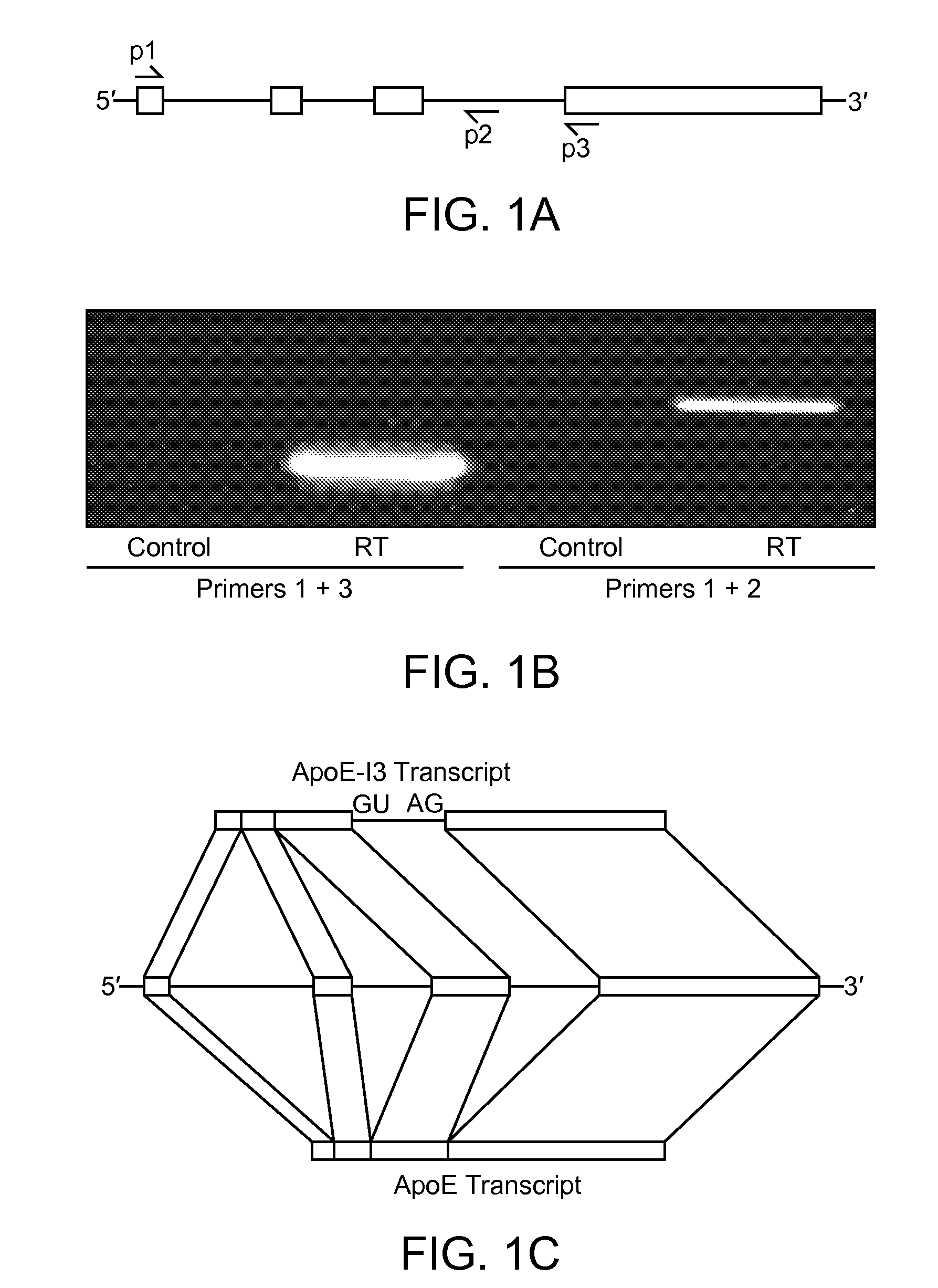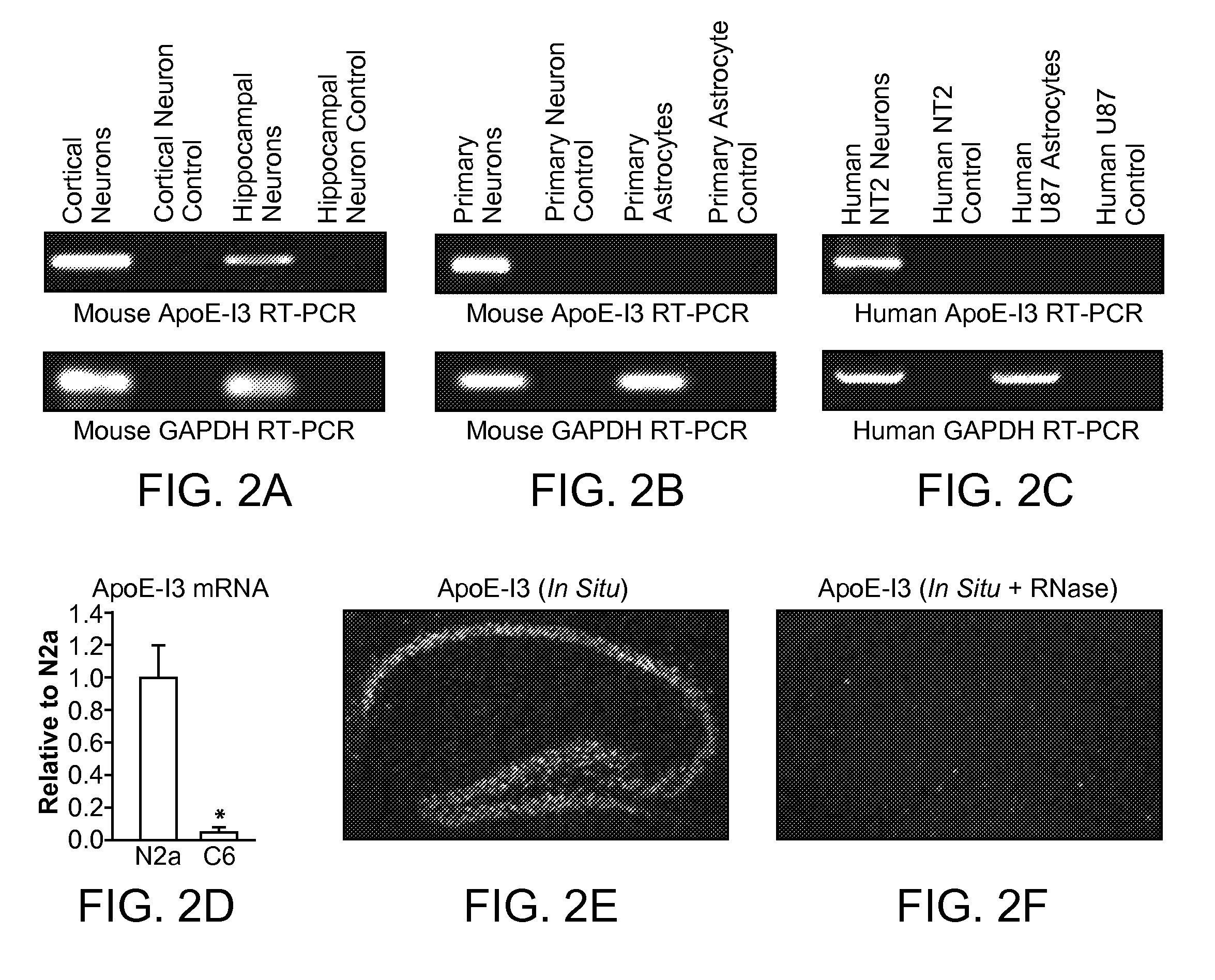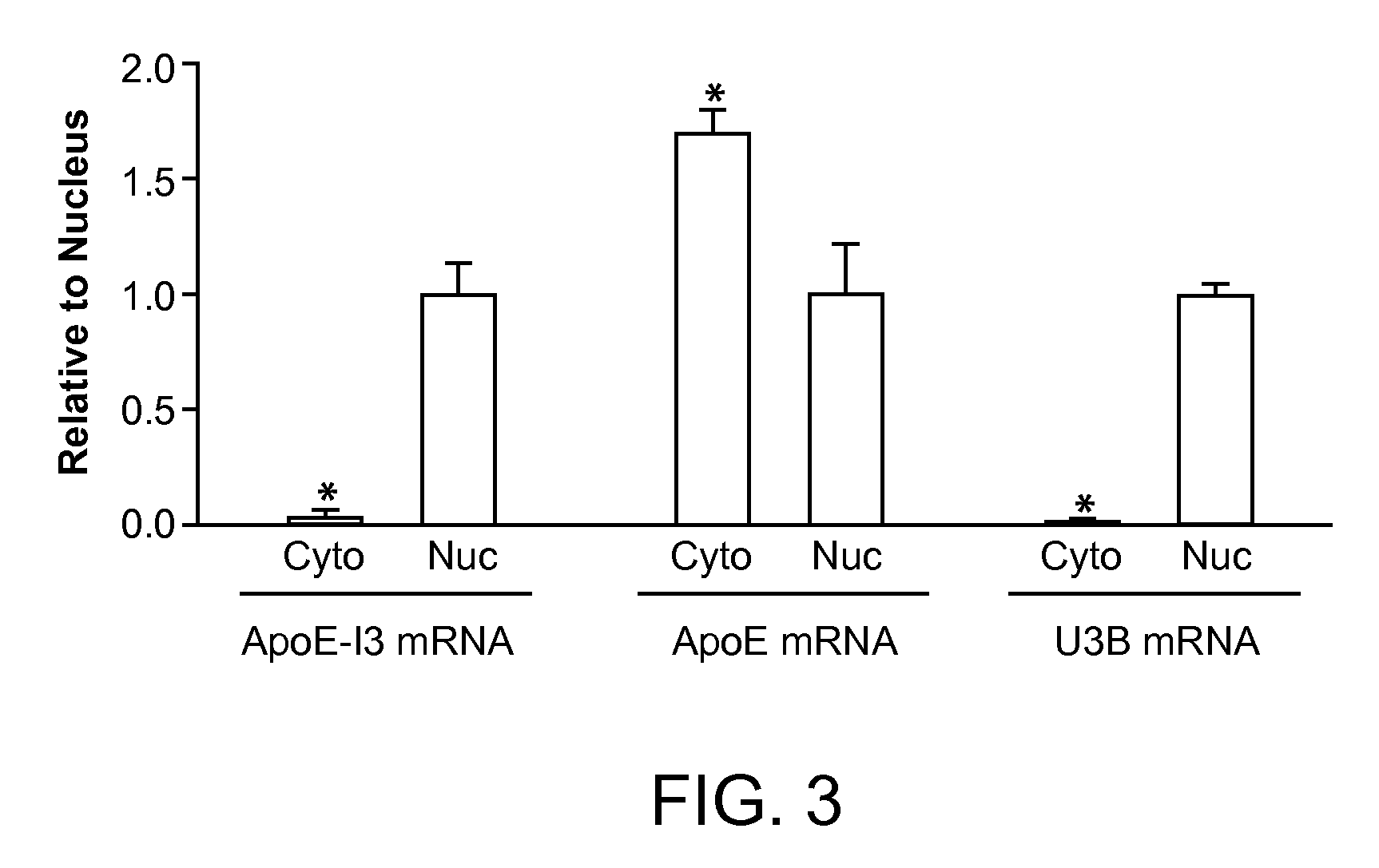Nucleic acid encoding apolipoprotein E-I3
a technology of apolipoprotein and ei3 is applied in the field of nucleic acid encoding apolipoprotein ei3, which can solve the problems of ineffective therapies for arresting (reversing) the impairment of central and peripheral nervous system function, and poorly understood molecular mechanisms underlying the regulation of neuronal expression of apo
- Summary
- Abstract
- Description
- Claims
- Application Information
AI Technical Summary
Benefits of technology
Problems solved by technology
Method used
Image
Examples
example 1
Intron-3 Retention Negatively Controls Neuronal Expression of Apolipoprotein E in the Central Nervous System
Methods
[0120]Reagents and animals. Minimum essential medium (MEM), Opti-MEM, and fetal bovine serum were from Life Technologies (Rockville, Md.). ECL was from Amersham (Arlington, Ill.). Polyclonal goat anti-human apoE antibody was from Calbiochem. Kainic acid was from Sigma (St Louis, Mo.). Wildtype mice were from the Jackson Laboratory (Bar Harbor, Me.). Human apoE3 or apoE4 knock-in mice were from Taconic (Hudson, N.Y.). All mice were weaned at 21 days of age, housed in a barrier facility at the Gladstone Animal Core with a 12-h light / 12-h dark cycle, and fed a chow diet containing 4.5% fat (Ralston Purina).
[0121]Determination of the full-length cDNA of apoE-I3 by 3′- and 5′-RACE. Human and mouse brain total RNA from Ambion was used as templates in the reverse transcription (RT) reaction. For 3′-rapid amplification of cDNA ends (3′-RACE), an anchored oligo-dT primer (ordere...
example 2
A Reporter Assay for Intron-3 Retention / Splicing in Neuronal Cells
[0152]A reporter assay in neuronal cells was developed to monitor apoE intron-3 splicing activity. An EGFP reporter construct (apoE-I3-EGFP, FIG. 11A) was created; this reporter construct was stably transfected into Neuro-2a cell. Owing to the lack of ability to splice intron 3 from apoE-I3-EGFP mRNA, Neuro-2a cells generated very low (baseline) levels of apoE-EGFP fusion protein, as determined by flow cytometry (FIG. 11B). When astrocyte-conditioned medium was added, intron-3 splicing increased, resulting in the expression of high levels of the apoE-EGFP fusion protein (FIG. 11B). Transfection of the same construct into astrocytic C6 cells resulted in very high and unchanged expression of the apoE-EGFP fusion protein, suggesting neuron-specificity of the reporter system. The stable Neuro-2a cells carrying the apoE-I3-EGFP reporter construct was cultured in 96-well plates; and a FlexStation III fluorescent plate reade...
PUM
| Property | Measurement | Unit |
|---|---|---|
| temperature | aaaaa | aaaaa |
| temperature | aaaaa | aaaaa |
| temperature | aaaaa | aaaaa |
Abstract
Description
Claims
Application Information
 Login to View More
Login to View More - R&D
- Intellectual Property
- Life Sciences
- Materials
- Tech Scout
- Unparalleled Data Quality
- Higher Quality Content
- 60% Fewer Hallucinations
Browse by: Latest US Patents, China's latest patents, Technical Efficacy Thesaurus, Application Domain, Technology Topic, Popular Technical Reports.
© 2025 PatSnap. All rights reserved.Legal|Privacy policy|Modern Slavery Act Transparency Statement|Sitemap|About US| Contact US: help@patsnap.com



